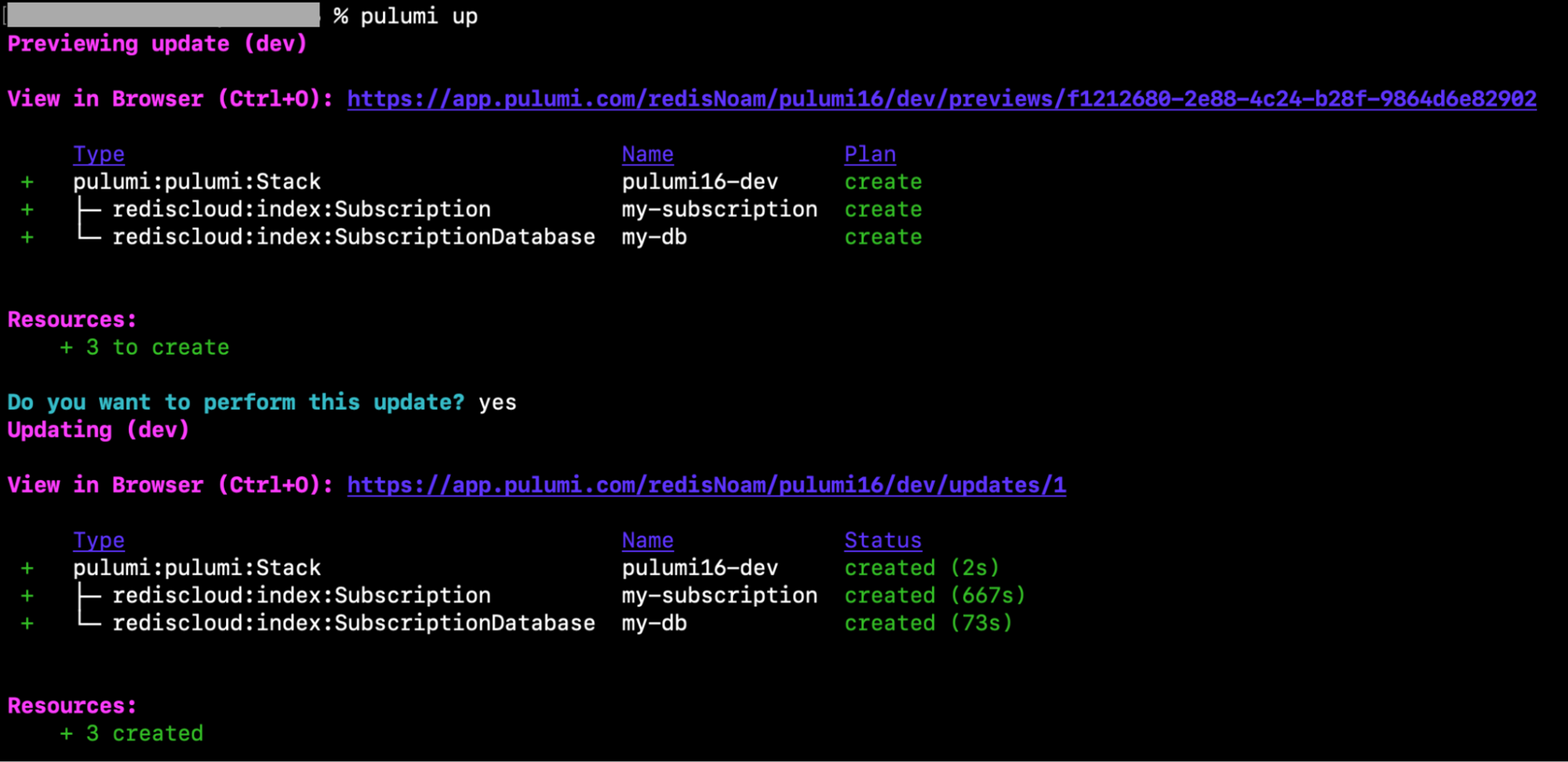Blog
Deploy and Manage Redis Enterprise Cloud With Pulumi
Redis Cloud is now supported by Pulumi, an infrastructure as code (IaC) platform that allows developers to manage cloud resources using familiar programming languages. With Redis Cloud and Pulumi, you can automate the creation and configuration of Redis Cloud resources and ensure consistency across environments.
Pulumi is a cloud-native IaC platform that lets developers define and manage cloud resources using their favorite programming languages, including Node.js, Python, Go, C#, and YAML. Pulumi offers a consistent, composable, and reusable way to manage resources that can be version-controlled and shared with others.
When you use Pulumi with Redis, you can automate the creation and configuration of Redis Cloud resources; doing so lets you spend less time on manual tasks and more time building your applications. Pulumi also provides testing and validation tools to ensure infrastructure reliability. You can write tests to validate a Redis Cloud configuration and catch errors before they cause problems in production.
The Redis Cloud provider for Pulumi is built as a bridge provider through Terraform. It provides the same functionality as the Terraform provider but with the added benefits of using Pulumi.
Want to see what’s possible? Here’s a step-by-step walkthrough to show how to create your first Redis resource using Pulumi.
Managing a Redis Cloud provider with Pulumi
Before you get underway, install Pulumi. And then…
Set up a Pulumi project and install the Redis Cloud provider package for your chosen language; in this example, it’s Python. You can do this by creating a new directory and running the following commands:
You will be asked to provide the configured credit card details and the Redis Cloud credentials as part of the Redis Cloud provider package installation.
The setup is done!
This creates a new Pulumi project with a basic file structure.
Write the Pulumi code. Now it’s time to write the Pulumi code to create and configure a Redis Cloud subscription and database in the __main__.py file that was created as part of the previous step.
This shows what the code might look like in Python:
This code assembles a Redis Cloud flexible subscription in AWS us-east-1 and a database within this subscription with 10GB of memory and 20,000 ops/sec throughput.
Deploy the infrastructure. Finally, you can deploy the Redis Cloud infrastructure. You accomplish this by running the following command:
This creates the Redis Cloud resources and saves the private endpoint URL in a variable called endpoint so you can use it in your applications.

The resources have been created successfully!
You can now manage your Redis cloud resources using Pulumi. That means you can add and remove Redis Cloud resources and update and delete the ones we just created.
What’s next?
Ready to learn more? Here are your possible next steps.
Get started with Redis today
Speak to a Redis expert and learn more about enterprise-grade Redis today.
